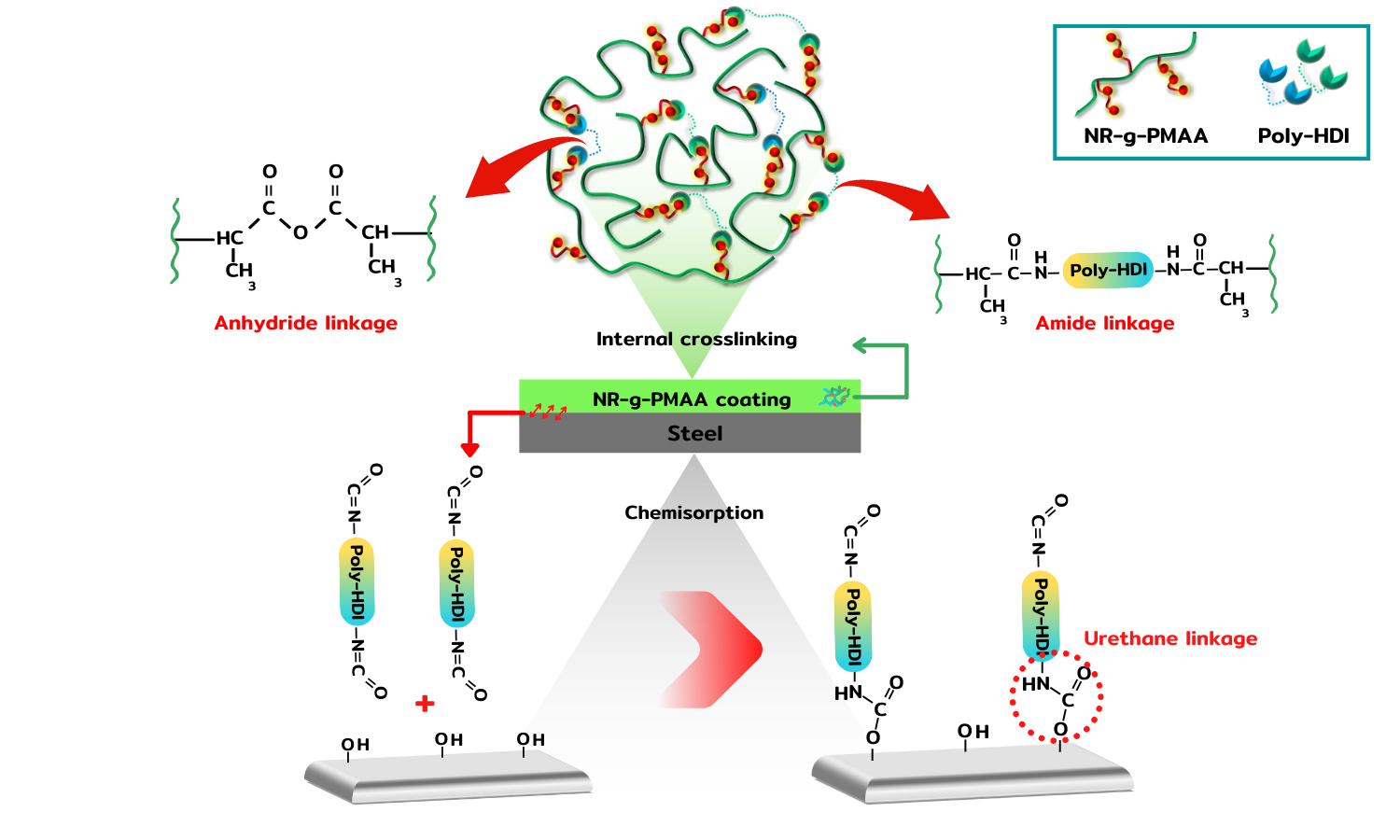Anti-rust primer for steel based on natural rubber bearing methacrylic functionality
Rattanawadee Ninjan, Bencha Thongnuanchan, Natinee Lopattananon, Charoen Nakason
Vol. 16., No.6., Pages 573-590, 2022
DOI: 10.3144/expresspolymlett.2022.43
DOI: 10.3144/expresspolymlett.2022.43
GRAPHICAL ABSTRACT

ABSTRACT
This study aimed to develop an anti-corrosion primer for steel based on natural rubber (NR). Graft copolymers of NR and poly(methacrylic acid), NR-g-PMAA, were first synthesized using a solution polymerization technique. The degree of grafting of poly(methacrylic acid) in NR-g-PMAA was evaluated by the 1H-NMR technique. The primer was then prepared by compounding the synthesized NR-g-PMAA with colour pigment and isocyanate crosslinking agent (poly-HDI). The X-ray photoelectron spectroscopy analysis indicated the formation of amide and anhydride linkages in the NR-g-PMAA primer by reaction with poly-HDI under ambient conditions. The cross-cut and salt-spray tests suggested that good adhesion of the primer to the steel was achieved by adding a 2:1 molar ratio of poly-HDI:MAA. The addition of poly-HDI to the NR-g-PMAA primer also significantly improved its weathering resistance. No rust deposits formed on the steel coated with the cured primer after 500 h of exposure in a QUV Accelerated Weathering tester. In contrast, a layer of iron oxide formed over the steel coated with the uncured primer, indicating that it corroded during testing. The X-ray diffraction analyses revealed that the iron oxides formed under the experimental conditions were dominantly lepidocrocite and goethite. Hence, it can be stated that when the NR-g-PMAA primer is formulated in conjunction with an appropriate amount of poly-HDI, it offers the potential to develop an anti-rust primer for steel.



